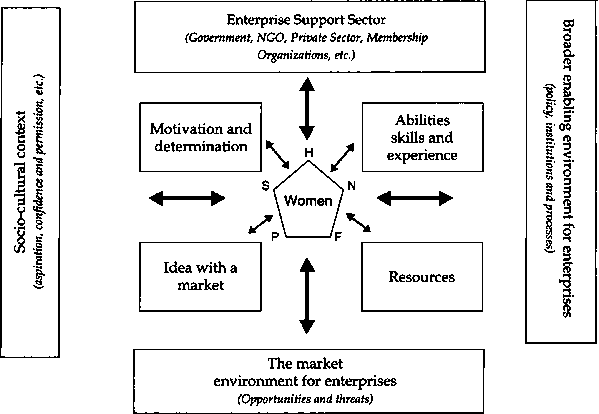Cooperative sector in Thailand
As in other developing countries, the cooperative sector in Thailand was established and promoted by the government as a means to improve income and livelihood opportunities for small farmers. The country's first cooperative, in the form of a small village credit cooperative called the Wat Chan Cooperative Unlimited Liability, was established by the government on 26 February 1916 in Phitsanuloke province.
With the success of the Wat Chan cooperative, the government expanded its support to a large number of small village credit cooperatives all over the country. The Bank for Cooperatives was set up in 1947. Two provincial cooperatives were established in Chiang Mai and Uttaradit provinces in 1952 and 1953. Multi-purpose cooperatives were set up in 1959 to meet additional demands of farmers. During this period, the government policy of cooperative amalgamation encouraged small credit cooperatives to merge with other types of cooperatives to form bigger bodies able to conduct a bigger volume of business for their members.
In 1966, the Bank for Cooperatives was reorganized into the Bank for Agriculture and Agricultural Cooperatives (BAAC) as a state-run financial centre for agricultural cooperatives and lending directly to individual farmers as well. Two years later, the Cooperative Society Act B.E 2511 was enacted to strengthen the cooperative movement. Also, in 1968, the Cooperative Act was amended to permit the establishment of the Cooperative League of Thailand (CLT) to function as the apex cooperative promotion organization.
The most recent amendment to the Cooperative Act in 1999 stipulated that all cooperatives would be affiliated to the CLT. Alongside, the government set up the National Cooperative Development Board to advise it on policy and guidelines for the promotion and development of cooperatives. The Act also provided for setting up of a Cooperative Development Fund in the Ministry of Agriculture and Cooperatives for providing financial assistance to cooperatives.
Cooperative sector in Thailand
|
Types of cooperatives |
No of cooperatives |
Members |
|
National level |
5 617 |
8.4 million |
|
Agricultural cooperatives |
3 413 |
5.09 million |
|
Land settlement cooperatives |
71 |
14 813 |
|
Fisheries cooperatives |
98 |
156 502 |
|
Sub-total agricultural cooperatives |
3 582 |
5.26 million |
|
Thrift and credit cooperatives |
1 342 |
2.2 million |
|
Services cooperatives |
245 |
708 574 |
|
Consumer cooperatives |
448 |
232 182 |
|
Sub-total non-agricultural cooperatives |
2 035 |
3.18 million |
Case for enterprise training skills within the Cooperative Promotion Department
The Cooperative Promotion Department (CPD) has relied on the short-term hiring of external trainers for its training needs.
External trainers vs. an internal cadre of trainers on rural cooperative enterprise
|
Approach |
Advantages |
Disadvantages |
|
Short-term contracting of external trainers |
Specialization Networking |
Not always cost-effective Trainers may not be available at the right time for the right subjects Does not build institutional training capacity within CPD on rural enterprise development Use of external trainers does not lead to development of in-house training material |
|
Promotion of rural enterprise development expertise within CPD |
Developing a rural entrepreneurial skills set within the CPD Understanding of enterprise promotion as different from cooperative membership participation Less dependence on external experts; creating of in-house expertise on the topic |
CPD needs expertise to better judge if trainers and training outputs are effective. Training staff have to serve both cooperative membership and rural enterprise training needs |
Promoting a culture of entrepreneurship
Government-sponsored groups tend to become dependent on the agencies promoting them. This culture inhibits a movement from support and hand-holding towards entrepreneurship development. A training programme requiring a change in this attitude is not easy to establish. Change is needed at all levels - policy-making, field staff and the women cooperative groups themselves.
A first enterprise development may fail and so may a second. But a subsequent venture will have more chance to succeed if the entrepreneurial spirit endures. Thus, the belief behind this training manual is that good business people create good businesses and, therefore, the focus must be on the entrepreneur and not the enterprise per se.
A major concern for the CPD is women's groups that remain economically unviable after taking government support. While being careful in selecting the groups to be assisted, the Department needs to strengthen its training programmes to capacitate the women's groups with entrepreneurial skills.
This training kit is not merely a training aid; it is meant to be a potential catalyst for stimulating demand for enterprise training and support services. It enables groups to become more aware of entrepreneurship needs. It also aims to make the government better responsive to various needs for rural enterprise development. These needs include not only grants, but also longer-term support such as improved technology and establishment of marketing linkages and networking among rural entrepreneurs.
A basic framework for rural enterprise promotion founded on an enhanced entrepreneurial attitude among group participants is given in the chart below (Richardson and Howarth, 2002). This Small Enterprise Development framework uses the MAIR (M = Motivation, A = Ability and experience, I = Idea with market and R = Resources) model for the success of a business and then goes on to suggest that agencies promoting small enterprises must take the following three factors in the external environment into account:
